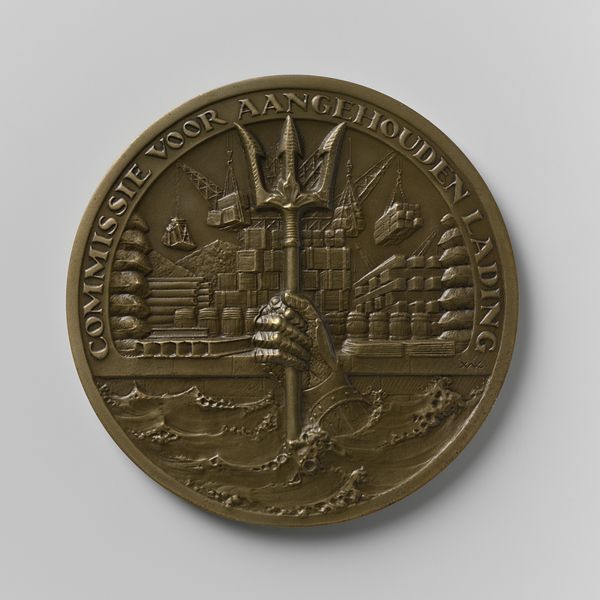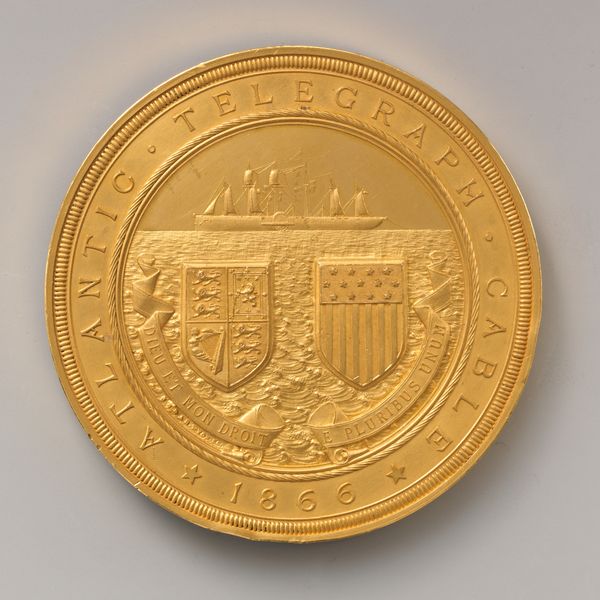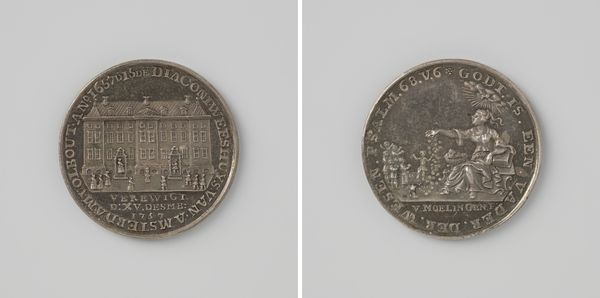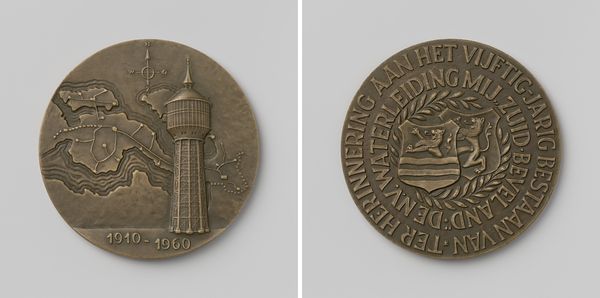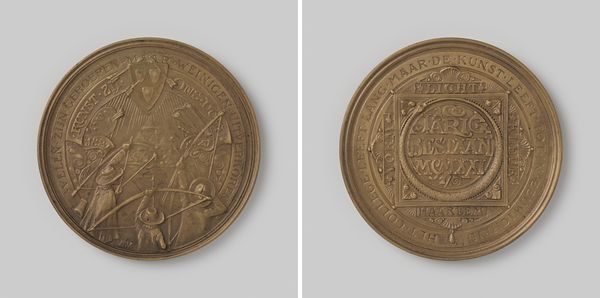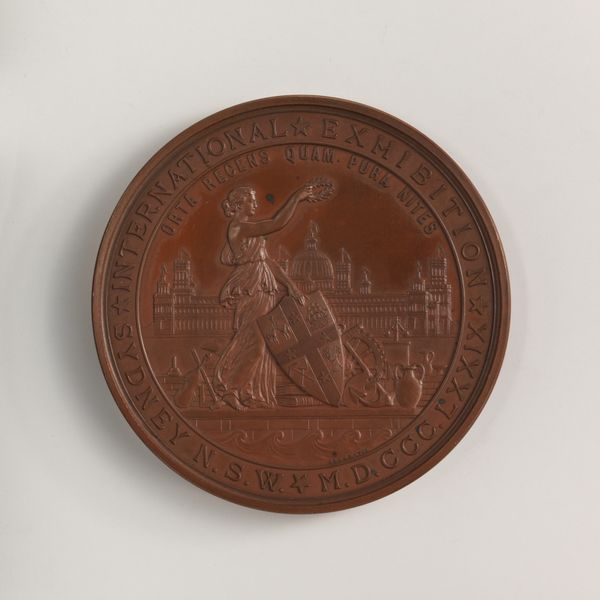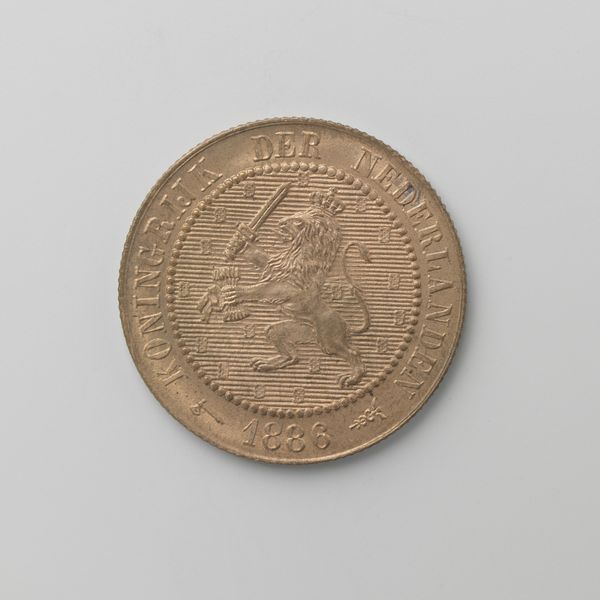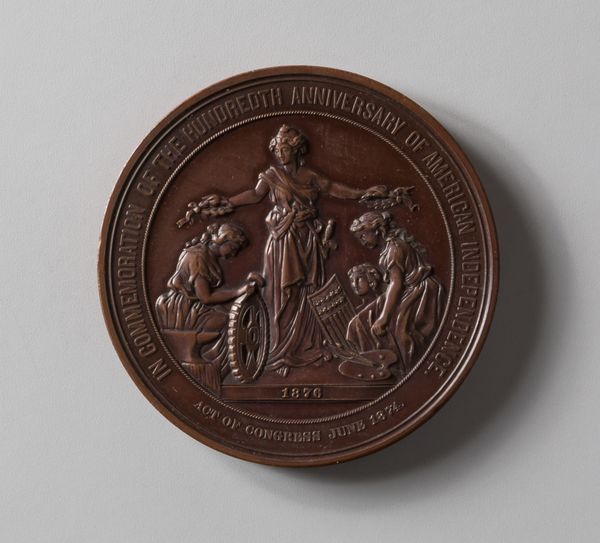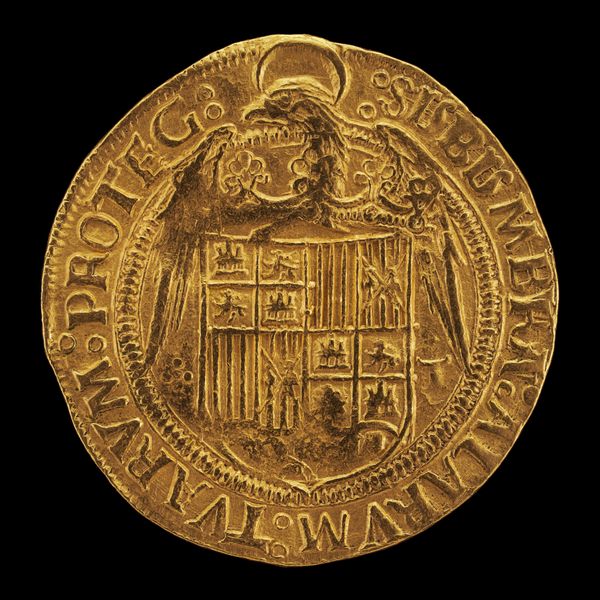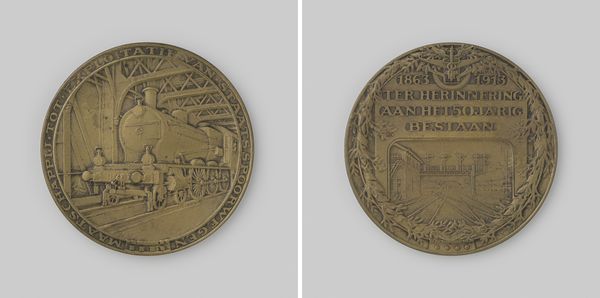
Inwijding van het nieuwe gebouw van het Koninklijk Koloniaal Instituut te Amsterdam 1926 1926
0:00
0:00
metal, relief, bronze, architecture
#
studio photography
#
product studio photography
#
aged paper
#
antique finish
#
rounded shape
#
metal
#
relief
#
retro 'vintage design
#
bronze
#
polished
#
embossed
#
metallic object render
#
golden font
#
architecture
Dimensions: diameter 6.0 cm, weight 67.10 gr
Copyright: Rijks Museum: Open Domain
Curator: Here we have Jacob Jan van Goor's bronze relief, "Inwijding van het nieuwe gebouw van het Koninklijk Koloniaal Instituut te Amsterdam 1926," or, in English, "Dedication of the new building of the Royal Colonial Institute in Amsterdam, 1926." It’s a mouthful! What's your initial impression? Editor: My first thought is of something… heavy. Both literally, given the material, but also symbolically. That monumental building, meticulously rendered on a small circular plane—it feels imposing. Curator: Absolutely. And perhaps that heaviness speaks to the gravity of the occasion. A grand building deserves a commemorative piece. What I find interesting is how van Goor condenses such an imposing structure into this circular format. The detail is astonishing. Editor: The composition is doing a lot of work here. The building, floating above what appears to be crests or emblems, anchored by text… it feels deliberately staged to convey power, doesn't it? Especially considering the Institute’s role in Dutch colonialism. Curator: Precisely. It’s impossible to separate this image from the historical context of colonialism. The Royal Colonial Institute was essentially a hub for the study and promotion of Dutch colonial interests. Does the artwork implicitly celebrate that endeavor? Perhaps. I also think its celebration can lead to critical reflections, it can start a conversation. What about you, does it inspire reflections, and if so, of what nature? Editor: It definitely sparks reflections. I see it as an artifact of a specific moment, a visual representation of institutional pride intertwined with a complicated colonial legacy. The architectural rendering speaks to a sense of permanence and authority, yet viewed through a contemporary lens, that authority is profoundly problematic. It really showcases the institution’s need to project authority over its actions. Curator: The medium is fascinating here too. Why a bronze relief? Bronze evokes history, permanence, value. Was it an attempt to immortalize not just the building, but also the ideas and systems it represented? Maybe they wanted this thing to survive! It will trigger future generations! Editor: Yes, the choice of bronze adds another layer. It suggests a desire to solidify the Institute's place in history, even as that history is being re-examined and contested today. To future audiences I want to say that the colonial institute does no longer exist, its functions have been repurposed, rebranded, but the memory remains... Curator: I agree. It’s a complex piece, inviting us to contemplate not just the artistic skill involved, but the uncomfortable truths about the past. It also inspires further research about colonialism. Editor: It really highlights how art can function as both a celebration and a document, inviting critical engagement with history and its ongoing reverberations. And more pieces like these are important, even if difficult, because they do inspire engagement!
Comments
No comments
Be the first to comment and join the conversation on the ultimate creative platform.
